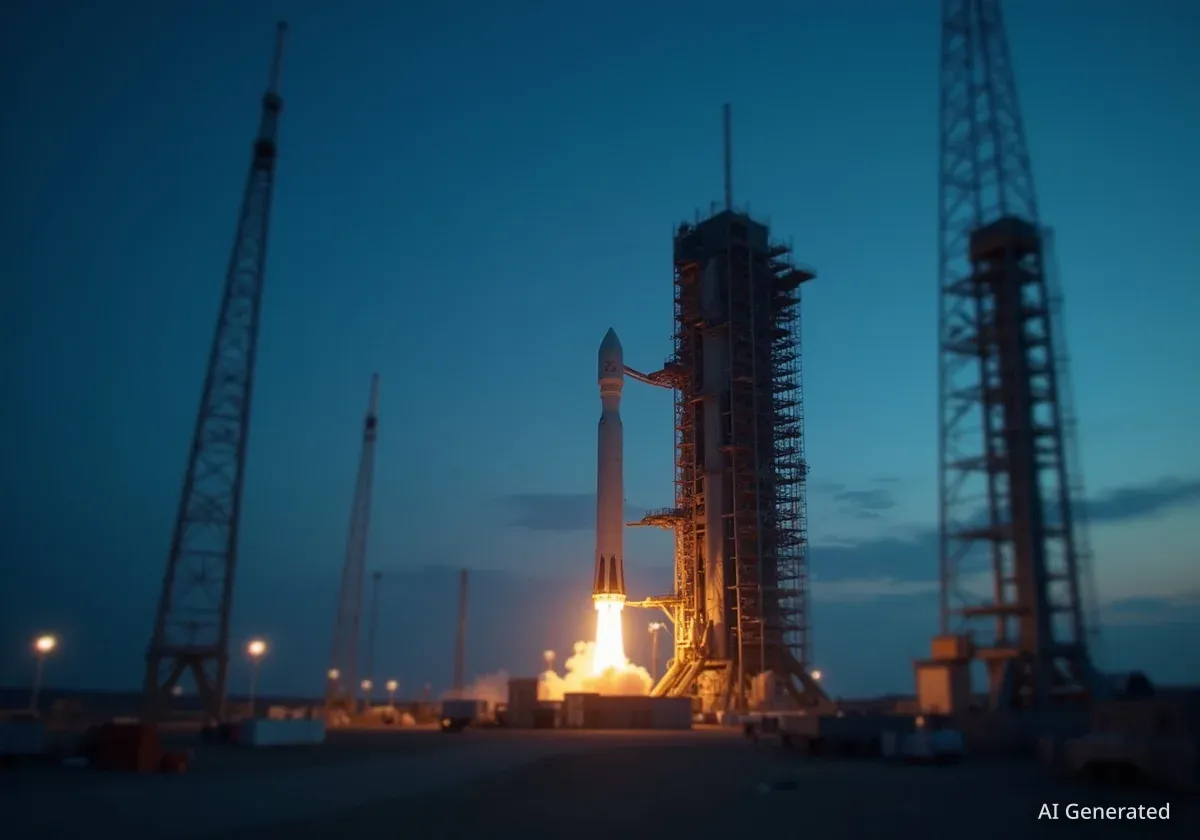SpaceX has presented a new, simplified plan to NASA for landing astronauts on the Moon, a move that comes after the space agency's acting administrator publicly criticized the company for falling behind schedule on the Artemis III mission. The proposal aims to accelerate the timeline for returning humans to the lunar surface while improving crew safety.
The development introduces new complexities into the Artemis program, as NASA confirms it is now evaluating accelerated proposals from both SpaceX and its primary competitor, Blue Origin, potentially reopening the lucrative lunar lander contract to wider competition.
Key Takeaways
- SpaceX has submitted a "simplified mission architecture" to NASA to speed up the Artemis III lunar landing.
- The proposal follows criticism from NASA's acting administrator about delays in SpaceX's development of the lunar lander.
- NASA is also evaluating an accelerated plan from Blue Origin and may seek proposals from the broader aerospace industry.
- The push for a faster timeline is influenced by China's goal to land astronauts on the Moon by 2030.
A Simplified Path to the Moon
In a recent company announcement, SpaceX stated it is formally assessing a revised mission plan designed for a faster return to the Moon. The company described the new approach as a "simplified mission architecture and concept of operations" intended to enhance crew safety and meet urgent national goals.
This initiative directly addresses concerns raised by NASA leadership about the original timeline for the Human Landing System (HLS), which relies on SpaceX's massive Starship vehicle. While Starship has completed several uncrewed test flights, it has not yet demonstrated the critical in-orbit refueling capability required for a lunar mission.
SpaceX has been developing the HLS under a multi-billion dollar contract, but the company claims it has also invested heavily in the program. According to its statement, SpaceX has self-funded more than 90% of the Starship development program.
Artemis Contract at a Glance
Under its current agreement, NASA has paid SpaceX approximately $2.7 billion for the design and development of the lunar lander. The total value of the contract could reach $4.5 billion if all milestones are successfully met.
NASA Opens the Door to Competition
The push for a new plan follows pointed remarks from Sean Duffy, NASA's acting administrator, who stated that SpaceX was behind schedule. Duffy announced that the agency would reopen the landing contract for the mission, inviting competitors to submit their own proposals.
A NASA spokesperson confirmed the agency's position, stating that it has received and is currently evaluating plans from both SpaceX and Jeff Bezos' Blue Origin for accelerating HLS production. The spokesperson added that NASA intends to issue a Request for Information (RFI) to the wider aerospace industry for additional proposals.
"A committee of NASA subject matter experts is being assembled to evaluate each proposal and determine the best path forward to win the second space race given the urgency of adversarial threats to peace and transparency on the Moon," the spokesperson said.
The public friction between NASA and its primary contractor was highlighted by a series of social media posts from SpaceX CEO Elon Musk, who responded critically to Duffy's comments.
The Competitive Landscape
With NASA re-evaluating its options, the competitive landscape for the lunar landing has intensified. Blue Origin, which has been developing its own lunar lander, stands to benefit from the opportunity.
The company has been working under a separate NASA contract since 2023, receiving approximately $835 million for its efforts. Blue Origin plans to launch a smaller-scale version of its lander, known as the Blue Moon Mark 1, as part of its development roadmap.
The re-evaluation process gives Blue Origin a significant chance to secure a larger role in the Artemis program, which aims to establish a sustainable human presence on and around the Moon.
The New Space Race
The urgency expressed by NASA officials is largely driven by international competition, particularly from China. The China National Space Administration has set an ambitious goal of landing its own astronauts on the Moon by the end of the decade.
In addition to its lunar ambitions, China recently sent a new crew to its Tiangong space station, an orbiting laboratory it constructed after being excluded from the International Space Station program due to U.S. national security concerns.
Challenges and Next Steps
For SpaceX, the path forward requires not only a revised plan but also tangible progress. The Starship vehicle has achieved significant milestones in its last two test flights, but the complex maneuver of refueling in orbit remains a major technical hurdle that must be overcome before a crewed mission is possible.
NASA has set a deadline for SpaceX and Blue Origin to submit their new proposals to speed up the project. The agency's subsequent RFI will open the field to other established aerospace firms and innovative newcomers, signaling that the final approach to landing the next Americans on the Moon is not yet settled.
The situation is further complicated by federal government operations, as some NASA employees supporting Artemis missions were previously required to work without pay during a government shutdown. This underscores the immense pressure on the agency to maintain momentum on its flagship exploration program amidst technical, financial, and geopolitical challenges.





